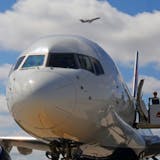In purely baseball terms, the early part of the season has been great for the Twins. They're hitting home runs at a record pace. And their 17-10 start through the end of April has them positioned with the second-best record in the American League and the third-best record in MLB.
That has not, however, translated into one critical area: attendance.
In 14 home dates through the end of April — including three in March when the Twins opened at Target Field — the Twins averaged just 17,007 fans. That was down from the 21,072 they averaged through April 2018, and the 19.3% decrease in attendance from last year to this year through April represents the second-biggest percentage decline in the majors behind Toronto.
The seven smallest crowds in Target Field history all came in the first 14 home games this season, including Tuesday's announced crowd of 12,181 that featured far fewer fans in the actual stands.
Across the board in MLB, attendance declined less than 1% from last year through April to this year through April, per USA Today. But overall MLB attendance dropped 4% in 2018, so the Twins are not alone in this attendance battle.
There are plenty of reasons and theories for the early attendance dip for the Twins this season. Let's examine some of those here:
• The weather was not good: The Twins played twice in March at Target Field on days in Minneapolis that didn't reach 40 degrees, and things didn't get much better from there. Only one of the Twins' 14 home games this season has come on a day when the high temperature in Minneapolis even reached 60.
There were five glorious April days when the high in Minneapolis was 70 or better. The Twins were on the road or off on all five of those days. Those cold temperatures surely pushed away some would-be fans, even as the Twins started the season playing well.



